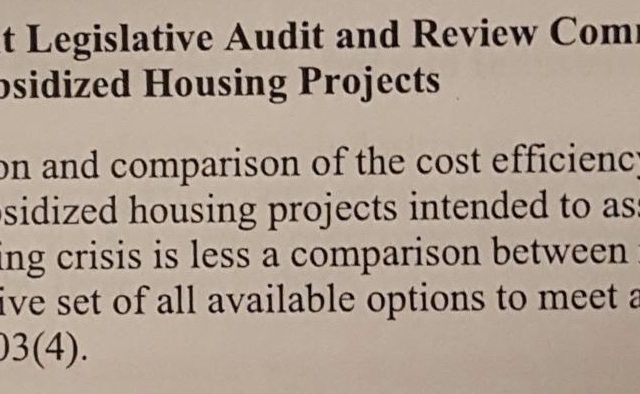Governor Inslee Fails Simple Test and Vetos a Study on Housing Costs
Over the last year two years, non-profit housing agencies, the Capitol Hill Housing Improvement Program (CHIP) and El Centro De La Raza (El Centro), each completed a housing projects, CHIP on Capitol Hill in 2015 and El Centro on Beacon Hill last year, in 2016. The CHIP project has 88 units of housing and the El Centro project 112, a total of 200 units. The total cost of the CHIP project was $47 million, $534, 091 per unit, and the El Centro project $45 million, or $401,786 per unit. Together, the two projects cost $92 million for 200 units of subsidized, rent restricted housing, $460,000 per unit. The El Centro project has a wait list that is five years long.
Meanwhile, in Eastern Washington the Growers League produced 200 units of shelter beds for farmworkers for $3 million or about $150,000 per unit. And every developer I’ve talked with tells me that not only is the cost of these projects exceedingly high (there are many townhomes in Seattle in the $400,000 to $600,000 range), but market rate builders and developers build multifamily housing for anywhere from $150,000 to $200,000 per unit, about half what the two agencies spent to build their projects.
Why is there such a big difference?
Well, the Governor of Washington, Jay Inslee, isn’t interested in asking or answering that question.
Last week, the Governor vetoed a budget item that would have set aside $500,000 to fund a study by the Joint Legislative Audit and Review Committee (JLARC) to do just that. His veto message said, in part,
The solution to our state’s housing crisis is less a comparison between market rate and subsidized housing than it is a comprehensive set of all available options to meet a serious need. For this reason, I have vetoed Section 103(4).
Aside from the awkward phrasing, the statement raises more questions than it answers about the Governor’s view of housing in the state. When did the “housing crisis” start? What is the crisis? If the crisis is a rise in housing prices, why are those prices rising? How can we find a solution if we don’t know why? And if subsidized housing is part of the, “set of all available options,” shouldn’t we understand how we could improve the efficiency of those subsidies?
Not according to Inslee. From his statement, it’s pretty clear that “all available options” means more money for the non-profit housing industrial complex: don’t ask questions just find more money.
What the Governor and his housing advisor Jim Baumgart have done is to essentially communicate that his letter sent to the Affordable Housing Advisory Board (AHAB) wasn’t serious. In that letter, delivered with a strong message by Baumgart that the Governor wouldn’t settle for just another long, wordy report, the Governor called for looking at “zoning and planning, permitting, development, and financing and construction processes” and that the AHAB should, “define where barriers exist and provide recommendation on how to remove these barriers.”
The product of that letter was a lengthy, and wordy report that had very little in terms of actual analysis of the causes of high prices and rehashed a lot of older, unimplemented recommendations that would have little impact on the production of housing.
Baumgart and Inslee are smart people. Even if all the letter was intended to do was find out how to produce more non-profit subsidized housing, the most obvious question would be, “are we paying more for units than we should, and is there a way to make our subsidies go further, to create more non-profit subsidized units?” This leaves aside the basic and fundamental economic fact that housing is expensive because there are more people that need housing that the market and the non-profits can produce. Why would Inslee and his advisor say that this isn’t important? The answer is simple: politics.
The non-profit housing industrial housing complex has a lot of power and pull, and they don’t want the public or people making policy to find out that their product is so costly to produce.
Unfortunately while Inslee and Baumgart cave to the non-profit’s powerful lobby that doesn’t want a light on their inefficient and corrupt system, there is a young person struggling to find a place to live, there is a family making a tough choice about living far away from work because housing in Seattle is too expensive, and a man who doesn’t have enough money to move away from his partner that is becoming more and more violent. This is the real world. The Governor would rather not know why these people have to wait five years for those $500,000 housing units. I wonder if it’s because of the costs to produce those units. Thanks to his veto and the non-profit industry, we won’t know the answer.


